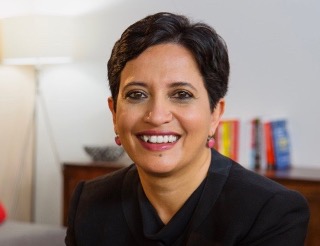Bootstrapping from Belgium: iText CEO Bruno Lowagie (Part 1)
Bruno has bootstrapped a highly profitable company from Belgium. Now what?
Sramana Mitra: Where are you from?
Bruno Lowagie: I’m from Belgium.
Sramana Mitra: I’m married to a Belgian. Were you born and raised in Belgium?
Bruno Lowagie: Yes, I was born in Ypres, which is in the west of Flanders. I lived there until I was 18. I went to college in Gent. I met Ingeborg there.
Sramana Mitra: You’re co-founders?
Bruno Lowagie: Yes. We married there.
Sramana Mitra: How about you? Are you from Gent?
Ingeborg Willaert: No, I’m also from the west of Flanders.
Bruno Lowagie: It’s really small. It’s a very rural area.
Sramana Mitra: What did you do after college?
Bruno Lowagie: I studied Civil Engineering and Architecture but I had my first computer at the age of 12. It was a Texas Instruments 99/4A. I wrote my first computer program at the age of 12. You could only store programs on a cassette deck. I don’t know if people remember but you had this cassette deck with strange sounds. At the age of 13, I had my first personal computer, a TRS -80 4P. It was my first portable. It was bigger than my mother’s sewing machine.
Sramana Mitra: You were tinkering with computers very early on?
Bruno Lowagie: Yes. Software was very expensive so I wrote my own word processing software. In my vacations, I went to the library. There weren’t any books about programming, but there were books about language. I programmed the hyphenation rules in my word processors.
Sramana Mitra: So you’re a real nerd?
Bruno Lowagie: Yes. I even had my first experience as an entrepreneur. I wrote a database system and because I didn’t have anything to put in the database, I went to all these social organizations and said, “Can I have your membership list?” They gave me their membership lists and I filled my database with them. I returned them with printed labels because in ’84 when they wanted to mail something to their members, they’d have to write everything by hand. I gave them a set of free labels and so they used them. A couple of weeks later, they said, “Can we have some more?” I said, “Yes, but these labels aren’t free.” That was my first business venture.
Sramana Mitra: What year did you graduate from college?
Bruno Lowagie: I graduated in 1995.
Sramana Mitra: With an architecture and civil engineering background?
Bruno Lowagie: Yes.
Sramana Mitra: Did you practice?
Bruno Lowagie: No, I did a vacation job halfway in my studies. I discovered that being an architect wasn’t for me. It took me seven years to get the diploma because I was constantly doing other stuff. My focus wasn’t on civil engineering anymore.
Ingeborg graduated one year earlier than me. She wasn’t employed and she got an invitation from the unemployment service. They had a one-year internship. It was five months of theory and seven months of practice but you had to clear an examination to enter the program. I was ranked the second out of 300 candidates and I wasn’t selected because they said I committed fraud. I had gone in Ingeborg’s place. I said, “How is this possible? I’m the second. Why don’t you admit me?” They admitted me anyway.
The five months was an internship for GIS IT engineers. GIS was my cup of tea. One part of my internship was teaching the next batch of students. That was 1996. For instance, I’d ask, “How much time do I get if I want to teach two weeks of Java?” Java existed only in 1995. So they gave me three weeks to study Java. During those two weeks, I taught people how to write Java. That was fun. It was like going back to what I did as a 14-year-old. That’s really what I wanted to do.
Sramana Mitra: Ingeborg, are you also an architect?
Bruno Lowagie: No. In spite of the fact that she’s a constructional engineer, we did our master’s thesis together. We were the forbidden couple because an architect and a constructional engineer don’t match or that was how students thought about it. Our thesis was about bridging the gap between engineering and architecture. We wrote the same book but she got a lower grade than I did because the architects accepted that we should also look at constructional aspects, but the constructional engineers didn’t like the fact that we said, “If a constructional engineer builds a bridge, it’s decent but it’s awful.” Our thesis was we should get these two together. It was a fun thesis.
This segment is part 1 in the series : Bootstrapping from Belgium: iText CEO Bruno Lowagie
1 2 3 4 5 6 7
Featured Videos
Can 1M/1M Help Me Raise Money?
How Does 1M/1M Democratize Entrepreneurship Education?
How Does 1M/1M Democratize Management Consulting?
When Is The Right Time To Join 1M/1M?
Can 1M/1M Help Me With Business Development?
Can 1M/1M Help Me With Market Sizing?
Can 1M/1M Help Me Validate My Product?
Will I Have Private 1-on-1 Sessions In 1M/1M?
How Does 1M/1M Help Entrepreneurs Connect With Silicon Valley?
Mentoring or Consulting?
Why Does 1M/1M Charge $1000 a Year?
Why Does 1M/1M Partner With Local Organizations?
Why Don\’t Mentoring Networks Work?
Why Is It Important To Study With 1M/1M Now?
Dan Stewart Story
Vikrant Mathur Story
